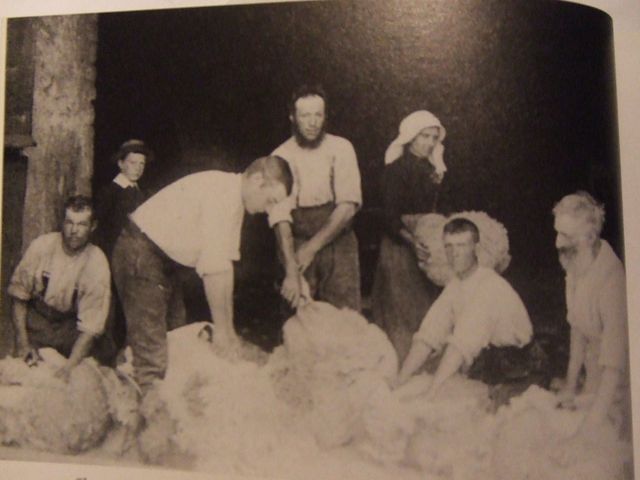I was browsing blogs that I follow recently and I came across One Year One Outfit on This is moonlight. I thought that it was just the sort of project that I would like to take part in.
Nicky, from This is Moonlight explains the challenge with these words:
“In 2015, I am going to set myself a simple but challenging goal, and I hoping a few of you will join me.
Make one outfit out of fabric sourced and made locally, that uses no synthetic dyes, and is sustainably farmed. Other than sourcing this fabric I will buy no new fabrics in 2015.”
If you’ve followed some of my previous posts, you’ll know that I am interested in the sustainability of the fashion industry. I don’t think I’ll be committing to new no fabrics this year though since I have already made some plans for my wardrobe. However, I’m really intrigued about sourcing my fabrics and notions locally. Will it be possible to make more “green” fabric purchases with less air miles?
I started by thinking about what people would have been worn traditionally in the West Country prior to the twentieth century and how they would have farmed in those days. My thoughts turned immediately to the novels of Thomas Hardy. I live about 60 miles from Dorchester, the setting for many of Hardy’s books so I hope that is local-ish. Besides I enjoyed these books so much as a teenager. They are populated with feisty, yet tragic heroines and the beauty of the rolling hills, moors and rugged coastlines of the West Country fill every page.
There are many references to sheep farming in the novels. In Far from the Madding Crowd, Gabriel Oake loses his entire flock over a cliff, necessitating him finding work as a shepherd and throwing him back into Bathsheba Everdene’s life. Later on, in the novel, Gabriel saves the sheep on Bathsheba’s farm, by his timely intervention when the sheep wander into a field containing clover and suffer from bloat.
There is an intriguing reference to a farming practice in The Return of the Native. One of the main characters, Diggory Venn, is a reddleman. His trade involves travelling the country visiting farms and marking sheep with “reddle” dye so that they can be identified.
Clearly, wool is a traditional product in this part of the world and there are many sheep breeds that are indigenous to the counties of the West Country.
There are over 40 different breeds of sheep in the UK each suited to different regions and types of production . Particular breeds occupy specific environments to which they have become adapted; the hills, uplands or lowlands. I wondered whether it would be possible to obtain locally grown wool from one of these local breeds. Many of these breeds are rather rare and had almost disappeared by the seventies. It would be good to support their resurgence in some way.
Here are a few websites as a starting point for sourcing yarn. Not all of them are from the West Country, but I’ve decided that I’ll keep updating this post as I find out more information and include websites from around the country too.
Good variety of different yarns from different sheep breeds.
Exmoor Horns are an ancient breed indigenous to Exmoor and are prized for both their fleece and their meat. The wool is spun at South Molton on Exmoor.
Hand dyed wool and yarn and blended yarns from various locations in the UK.
A spinning mill in Lynton in North Devon with wool from Exmoor sheep.
There are a few naturally dyed yarns for weaving and information on the sheep breed and location.
The wool is a farm on the Surrey Hampshire border. They supply both knitting and weaving yarns from Gotlands (a breed originally from the Gotland Island, Sweden) and Shetlands.
Many natural undyed wools from a variety of breeds.
Wool “tops” unspun sheep’s wool from various different breeds based in Yorkshire.
Wool yarn from various breeds of sheep living in Somerset (Mendip Hills).




Pingback: Colour to dye for | Steely Seamstress